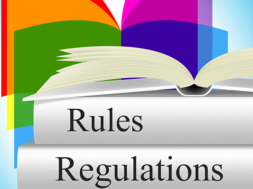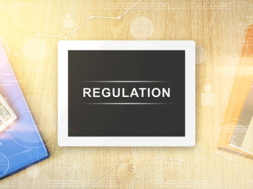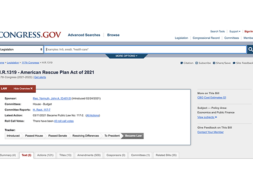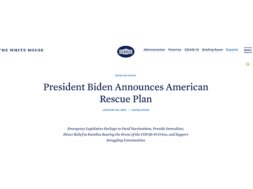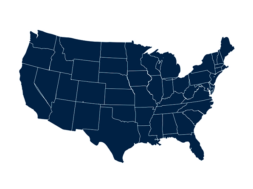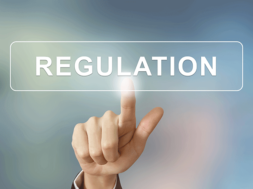
A Roadmap to Compliance with the New Title IX Rule
By Scott Goldschmidt, Counsel, Thompson Coburn, LLP
On May 19, 2020, the Department of Education (the “Department”) issued its highly-anticipated final Title IX rule1 (the “Rule”). This Rule is the first significant revision of the Title IX regulations in over 40 years and represents a daunting compliance challenge for institutions of higher education. It also contains a number of controversial provisions, such as the rule’s definition of sexual harassment and its requirements for cross-examination during live hearings.
This article will propose nine steps to help guide institutions toward compliance by the Rule’s effective date, Aug. 14, 2020. Those interested in a more in-depth review of the Rule’s requirements can access a recording of Thompson Coburn’s May 20 webinar, “USED’s New Title IX Rule: A Detailed Examination2.”
Step 1 – Assemble your team
Compliance will truly be an institution-wide effort. In addition to students, the Rule makes clear that faculty members, employees, and other individuals with or without affiliation to the institution may be subject to the requirements of Title IX.3
Ideally, the mandate for the Title IX compliance team will come from the Office of the President or Chief Executive Officer.
Buy-in and a sense of urgency from the top of the institution is important to help convince extremely busy staff and faculty members that Title IX needs to be made a priority.
This is especially true as institutions are already stretched thin in light of the COVID-19 pandemic and its effect on the higher education industry as a whole.
Title IX compliance team should be led by the institution’s Title IX coordinator and could include representatives from the following offices:
- Office of the President or Chief Executive Officer
- Office of Student Affairs
- Office of Human Resources
- Office of the Provost
- Campus Law Enforcement
- Office of Communications
- Office of General Counsel and/or Compliance
This team should have the authority to set deadlines and assign tasks, keeping in mind the Rule’s effective date of Aug. 14.
Step 2 – Review relevant laws and gather documents
Institutions should gather and review state laws, current policies and procedures, and any agreement that prescribes the standard of evidence to be used to adjudicate claims of sexual harassment (for example, a faculty handbook or a collective bargaining agreement).
It is important to review state law to determine if there are any laws that would dictate how a Title IX policy or procedure must be drafted. This includes requirements relating to the definition of consent, the proper standard of evidence to use in a sexual harassment hearing, a requirement that all employees must report sexual harassment, or a requirement to add a notation to the transcript of a student found responsible for sexual harassment. Moreover, as will be explained below, it is important to know whether an institution is a party to an agreement that prescribes the standard of evidence to be used to adjudicate claims of sexual harassment, as this may affect an institution’s discretion to choose its preferred standard of evidence. Last, current sexual harassment policies and procedures may be useful, as many terms and concepts may be able to be recycled into the revised policies and procedures.
Step 3 – Make initial threshold decisions
While the Rule contains a number of mandatory requirements, it also provides flexibility for institutions in certain areas to follow best practices and other recommendations. Before policies and procedures can be drafted, a school should consider and have an answer to the following:
Standard of evidence: Absent state law requirements, an institution may choose either the preponderance of the evidence standard or the clear and convincing standard for all formal complaints against students and employees.4 The Preamble explains that schools should choose “the standard that best meets the recipient’s unique needs and reflects the recipient’s values.”5
The requirement to apply a consistent standard of evidence for formal complaints against students and employees could prove problematic for schools with a collective bargaining agreement or faculty handbook that already prescribes a standard for employee complaints of sexual harassment. In this situation, the school must either use that same standard for student complaints or revise/renegotiate the standard of evidence.
Definition of consent: Absent state law requirements, the Rule offers institutions flexibility to craft their own definition of consent, including what constitutes the absence or negation of consent.6
Informal resolution: While the Rule permits informal resolution of a formal complaint, schools are not required to establish an informal resolution process.7 Schools must decide whether to create and offer such a process and which options for informal resolution will be offered.
Officials with authority: Under the Rule, a school has “Actual Knowledge” when the school’s Title IX Coordinator or any “official of the school who has authority to institute corrective measures on behalf of the institution” has notice of alleged sexual harassment.8 The Preamble explains that the determination of which employees may be an official with authority is fact-specific9, but generally an employee’s supervisor and a Dean are likely officials with authority.10 Institutions also have the ability “to publicize a list of officials with authority, in a location easily accessible and known to the student body, so that those who wish to file complaints know how to do so,”11 and have wide discretion to craft and implement their own policies about when an employee must report sexual harassment to the Title IX Coordinator.12
Schools should strongly consider publicizing a list of officials with authority, so that there is no question about which employees are “officials with authority.”
Absent state law requirements, schools should also consider their preferred policy concerning which employees must report sexual harassment to the Title IX coordinator and which employees have the discretion to not report.
Non-Title IX offenses: For purposes of this Rule, an institution must dismiss formal complaints of sexual harassment that do not meet the definition of sexual harassment under 34 CFR 106.30, did not occur in an institution’s program or activity, or did not occur against a person in the United States.13 But an institution has the discretion to address any of these complaints in its Code of Conduct.14
Institutions should consider: (1) which non-Title IX offenses it will prohibit in its Code of Conduct and (2) the process it will use to adjudicate those offenses.
It is also important to note that institutions are obligated to adopt and publish grievance procedures that provide for the prompt and equitable resolution of student and employee complaints alleging any form of prohibited sex discrimination occurring against a person in the United States.15 This obligation is broader than an institution’s requirement to address complaints of sexual harassment. Institutions should weigh the pros and cons of using the same grievance process for these complaints or using a different process.
Step 4 – Assign tasks
After the institution makes its initial threshold decisions, the work of actually drafting new policies and processes can begin. There are a number of ways this can be accomplished, but here is a recommended division of responsibilities:
Title IX policy: At a minimum, a Title IX policy should set forth the institution’s general policy prohibiting sexual harassment in an institution’s education or program or activity against a person in the United States and reference the institution’s grievance procedures that provide for the prompt and equitable resolution of complaints of sexual harassment. The policy should include basic definitions, including but not limited to the definitions of complainant, respondent, sexual harassment, actual knowledge, formal complaint, and consent; inform potential complainants about reporting options; identify support for alleged victims; and prohibit retaliation.
Title IX grievance procedure: An institution’s Title IX grievance procedure must comply with the requirements found in 34 CFR 106.45. The requirements found in Section 106.45 are too numerous to list in this article, but institutions should plan to spend a significant amount of time working through and drafting complaint procedures.
Investigative process: Institutions should consider creating a written policy or process that standardizes how allegations of sexual harassment are investigated, addresses coordination with law enforcement, and explains that all investigators will be trained and free of bias and conflicts of interest. Additionally, institutions should also consider, to the extent possible, drafting template notices consistent with the Rule to be sent to complainants and respondents.
Emergency removal: Under the Rule, institutions are permitted to remove a respondent from campus on an emergency basis, provided that the school:
- Undertakes an individualized safety and risk analysis;
- Determines that an immediate threat to the physical health or safety of any student or other individual arising from the allegations of sexual harassment justifies removal; and
- Provides the respondent with notice and an opportunity to challenge the decision immediately following the removal.
An institution also would be permitted to place a “non-student employee respondent” on administrative leave during the “pendency of [its] grievance process.”16
Institutions should consider drafting policies and processes surrounding emergency removal and addressing at least: (1) which members of the campus community are included in any emergency removal decisions, (2) the process for conducting an individualized safety and risk analysis17 , and (3) the procedure for a respondent to challenge the emergency removal decision.
Step 5 – Develop a training plan
The Rule mandates the following training for the following individuals:
Title IX coordinators, investigators, adjudicators, and any person who facilitates informal resolutions:
- The definition of sexual harassment and scope of the school’s education program or activity;
- Procedures for conducting an investigation and grievance process including hearings, appeals, and informal resolutions; and
- The importance of serving impartially, including by avoiding prejudgment of the facts at issue, conflicts of interest, and bias.
Investigators: How to create an investigative report that fairly summarizes relevant evidence.
Adjudicators: How to use technology at the live hearing, and how to handle questions and evidence, including when questions and evidence about complainant’s sexual history are not relevant.18
In light of the COVID-19 pandemic and the fact that individuals requiring training may be working remotely through much of the summer, institutions must consider how training will logistically be conducted. Whether the institution will record training to be watched asynchronously or provide the training live on a video conferencing platform, such decisions should be made sooner rather than later so the training can be created and, if necessary, training dates can be scheduled.
In addition to the required training, institutions should also strongly consider holding at least one mock hearing prior to the start of the fall 2020 semester.
Mock hearings can introduce adjudicators to the new policy and procedures, force adjudicators to grapple with difficult aspects of the process, provide an opportunity for questions to be answered in real-time, and allow for suggestions or corrections.
It is also important to keep in mind that institutions must make the training materials used publicly available on the institution’s website.19
Step 6 – Determine approvals required and advice sought
Once a draft of the required documents is developed, institutions should consider which individuals and organizations must provide input and approval and which opinions are merely advisory. For example, an institution may wish to solicit non-binding advice from a student organization involved in sexual assault issues, but require approval from the faculty. In addition, if edits from the President/CEO or the Board must be incorporated, institutions should build sufficient time into their process for such edits to be returned.
Institutions should set clear expectations and deadlines to ensure that all comments and approvals are received in time to enact the policy and procedures by Aug. 14, 2020. If a Board meeting needs to be scheduled to approve the new policy, schedule that date as soon as possible.
Step 7 – Find adjudicators and advisors
At a minimum, the Rule requires adjudicators to be free of conflict of interest and bias and trained.20 But more than that, institutions should try to find adjudicators who can represent the institution well. Ideally, adjudicators would understand the gravity of and be comfortable with the sensitive issues addressed in a sexual harassment hearing, make the parties feel like they are being heard and dealt with fairly, and be able to communicate a decision effectively in writing. Adjudicators also must be comfortable controlling the hearing and handling difficult personalities, as tensions for all parties generally run high and the parties’ advisors may attempt to push boundaries. This is especially true if the advisors are attorneys attempting to zealously advocate for their clients.
Institutions should also identify individuals to act as advisors in advance.
If a party does not have an advisor, the school is required to provide an advisor, free of charge, to conduct cross-examination. The advisor may be, but is not required to be, an attorney.21
While the Rule does not impose any requirement to train advisors, institutions should consider providing some training for any advisors it provides. If an advisor is familiar with the process, an institution may be less likely to receive a complaint or challenge.
Step 8 – Develop a communications plan
As institutions will be significantly changing their Title IX policies and procedures, it is important to develop a plan to proactively communicate those changes to the student body, faculty, and employees and explain why those changes are being made. Such a communication can reiterate the institution’s commitment to address and remediate sex discrimination, provide information on how members of the community can report complaints of sexual harassment, and explain the new requirements imposed by the Rule and the institution’s policy and procedure.
It is also important to communicate the effective date of the new policy. Ideally, members of the community should have time to review and understand the new requirements before it goes into effect.
Step 9 – Continue refining
While it will certainly be a heavy lift to get the policy and procedure in place by Aug. 14, it is important to build in a process to assess and make any changes going forward. Institutions should consider keeping the Title IX compliance team active and revisiting the new policies and procedures after the end of the 2020-2021 school year for edits and re-assessment.
Resources
- https://www.govinfo.gov/content/pkg/FR-2020-05-19/pdf/2020-10512.pdf
- https://www.thompsoncoburn.com/insights/tcle/presentation/detail/2020-05-08/used-s-new-title-ix-rule-a-detailed-examination
- 34 CFR 106.30(a) (Definition of Complainant and Respondent).
- 34 CFR 106.45(b)(1)(vii).
- 85 Fed. Reg. 30376.
- 34 CFR 106.30(a) (Definition of Consent).
- 85 Fed. Reg. 30407.
- 34 CFR 106.30(a) (Definition of Actual Knowledge).
- 85 Fed. Reg. 30116.
- Id. at 30119.
- Id. at 30106.
- Id. at 30043 (“The Department also intends to leave postsecondary institutions wide discretion to craft and implement the recipient’s own employee reporting policy to decide (as to employees who are not the Title IX Coordinator and not officials with authority) which employees are mandatory reporters (i.e., employees who must report sexual harassment to the Title IX Coordinator), which employees may listen to a student’s or employee’s disclosure of sexual harassment without being required to report it to the Title IX Coordinator, and/or which employees must report sexual harassment to the Title IX Coordinator but only with the complainant’s consent.).”
- 34 CFR 106.45(b)(3)(i).
- Id.
- 34 CFR 106.8(c)-(d).
- 34 CFR 106.44(c)-(d).
- “Recipients are entitled to use § 106.44(c) to remove a respondent on an emergency basis, only where there is an immediate threat to the physical health or safety of any student or other individual. The ‘individualized safety or risk analysis’ requirement ensures that the recipient should not remove a respondent from the recipient’s education program or activity pursuant to § 106.44(c) unless there is more than a generalized, hypothetical, or speculative belief that the respondent may pose a risk to someone’s physical health or safety.” 85 Fed. Reg. 30233.
- 34 CFR 106.45(b)(1)(iii)
- Id. at 106.45(b)(10)(D)
- Id. at 106.45(b)(1)(iii)
- Id. at 106.45(b)(6)
SCOTT GOLDSCHMIDT is an attorney in the higher education practice at Thompson Coburn, LLP. He frequently advises on discrimination law, student affairs, contract drafting and review, and policy development and is well-versed in navigating all types of day-to-day and long term legal demands facing colleges and universities. Scott also has experience with crisis management, advising on reputational concerns, and implementing controls to mitigate risk. He was previously the Deputy General Counsel for Catholic University.
Contact Information: Scott Goldschmidt // Counsel // Thompson Coburn, LLP // 202-585-6963 // sgoldschmidt@thompsoncoburn.com // http://www.thompsoncoburn.com // https://www.linkedin.com/company/thompson-coburn-llp/

